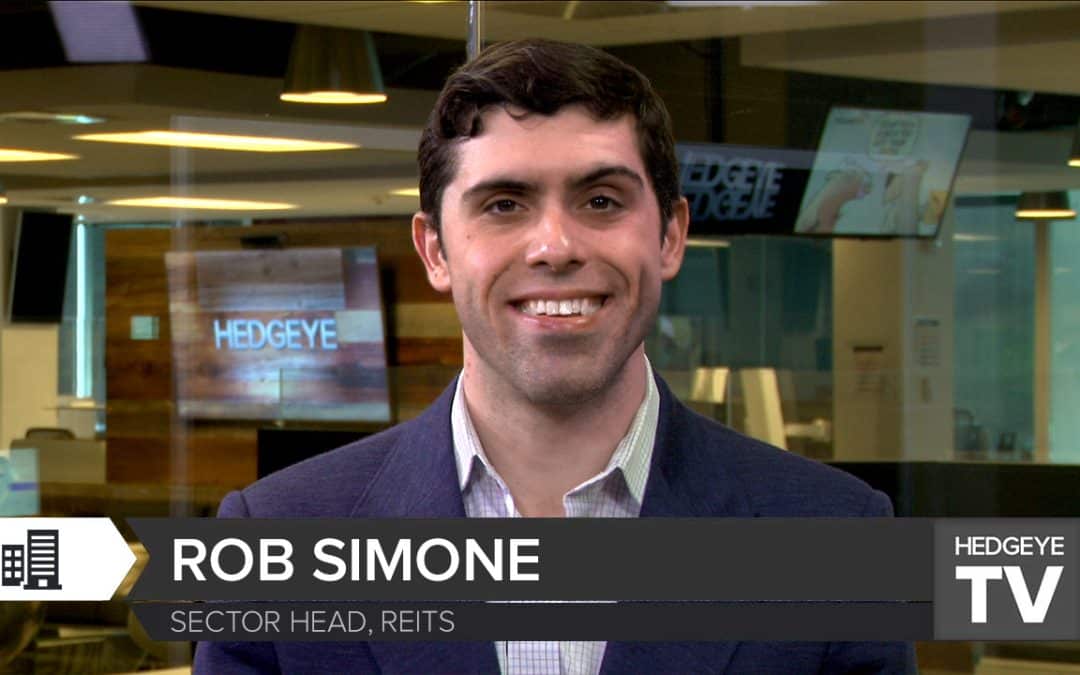Within the realm of real estate investment trusts (REITs), Birmingham, Alabama-based Medical Properties Trust Inc. (NYSE:MPW) has gained a surplus amount of attention – mostly for the wrong reasons. MPT owns approximately 440 healthcare properties in the U.S. and around the world and it focuses on facilities subject to NNN leases. However, in the past two years it has experienced operational difficulties tied to its largest tenant, Dallas-headquartered Steward Health Care, which resulted in the cratering of MPT’s stock value.
One of the first thought leaders to call attention to MPT’s problems was Rob Simone, managing director and partner at Hedgeye Risk Management and head of the Stamford, Connecticut-based company’s REITs coverage. In this exclusive interview, Simone explains what went wrong for MPT.
For the benefit of the readers who are not focused on MPT, what is this particular company all about? And why do you have some concerns about it?
It’s a very interesting question. And the truthful answer is: I don’t know what they are.
What I mean by that is they represent themselves as a triple net leased hospital REIT when they function more like a regional development bank. In my world, REITs are supposed to be exclusively property investors. But what these guys do is they make significant investments in opcos [operating companies]. One of the initial concerns we had is that many of the tenants that they have executed sale leasebacks with over the years are clearly financially distressed, if not insolvent – and rather than cutting the rent to make that relationship more sustainable and affordable, they lend money to those tenants who then pay them back with above market or unaffordable rent. It’s bit of a Frankenstein monster – it pays real estate prices for opco cash flows.
Back in April 2022, you made your first recommendation to short MPT. What was the deciding factor for that?
There were a few. The overarching theme was that the relationship between MPT and its tenants – the way it was running the company was just unsustainable. We observed this kind of secular increase in MPT as leverage over time. And at the same time, the financial performance of the tenants who were very clearly struggling, if not in some cases failing. If tenants are dependent on MPT for support, so as to afford their rent, that can only go on so long as MPT has access to capital. And as soon as they lost that, or they ran out of liquidity, the whole house of cards would fall apart and break down. We saw early signs of that in late 2022 and early 2023; the company itself ran up against this liquidity wall over the last like quarter or so.
Steward Health Care System is MPT’s largest tenant and that’s been in the news recently. Steward has been financially challenged and arguably insolvent for the better part of over half a decade, and in prior years, what the company would have done was just make another loan to Steward to keep them operating and keep the rent coming in. What happened was soon as the company ran out of revolving borrowing capacity, Steward stopped paying rent and failed. I took that as validation that the perverse symbiotic relationship had broken down. And in the end, what was going to happen was it was going to crush MPT’s stock price when it got there.
This is a potentially silly question, but how can a hospital become insolvent? It would seem like one place that would never run out of out of business.
No, that’s not a silly question at all – it’s actually a very good question. There’s a split between for-pay hospitals that are in the private sector and the not-for-profit hospitals and health systems that operate a little bit differently with a different motive. And what you find is there’s a very perverse relationship that between MPT and its tenants that goes on here – I call it adverse selection.
If you have a hospital or a system that derives the majority of its revenue from public pay sources, whether it be Medicare or Medicaid, basically the hospital is a regulated utility, like your gas company or your water utility. The government will let them operate privately but never price gouge their customers or like earn an excess return on you. They’re allowed to earn a return or rate of revenue, and they have to make all their expenses fit underneath that. What tends to not work is loading them up with a lot of debt or very large lease payments, because it’s one more expense that the hospital can’t necessarily afford.
What MPT has done over time was select the financially weakest hospitals that need capital, bought the real estate out of them – which allowed the hospitals to take those proceeds and pay back normal debt or pay dividends. But it loaded up these struggling or not-well-capitalized safety net hospital systems with very large leases, and that put them in a tremendous financial burden on them that otherwise would not be there. So, my theory is the rent has a lot to do with it.
Where is MPT today? Their stock sank by 80% since your first short in April 2022.
While it has a $3.50 cent stock price, it still has a $2 billion market cap. And our view is that the company very materially overpaid for its assets, and the assets are worth less than the debt by a very significant margin. There’s a very high likelihood that the bondholders may have to take a haircut as this company undergoes a very painful debt maturity process over the next two years.
If we were to have this conversation a year from now, where do you see MPT?
Oh, man, that’s the $2 billion question. The company has been burning a tremendous amount of cash and it’s been trying to work its way out of this mess, but thing haven’t really been going in its favor.
We think that their $1.8 billion revolver is basically fully drawn They’re probably going to have to reduce their dividend – I think that’s the next thing that’s going to happen. I think they’ll cut it to the maximum degree possible.
But the real problem here is their debt maturity wall. They have $1.4 billion of debt maturing in the first quarter of 2025, with a fully drawn revolver. They need to raise money, and they haven’t yet. The window is getting very, very tight for them to get capital in the door via selling assets or doing some kind of JV transaction, which themselves are very diluted and bad for the equity.
It’s kind of a sensational thing to say, but it’s just the math – they’re going to run out of money if they don’t raise capital somehow. There’s this assumption that somehow it’s just going to be okay. But I don’t know mathematically how this company is going to deal with close to $1.8 billion maturities over the next 12 months and be able to make it.












